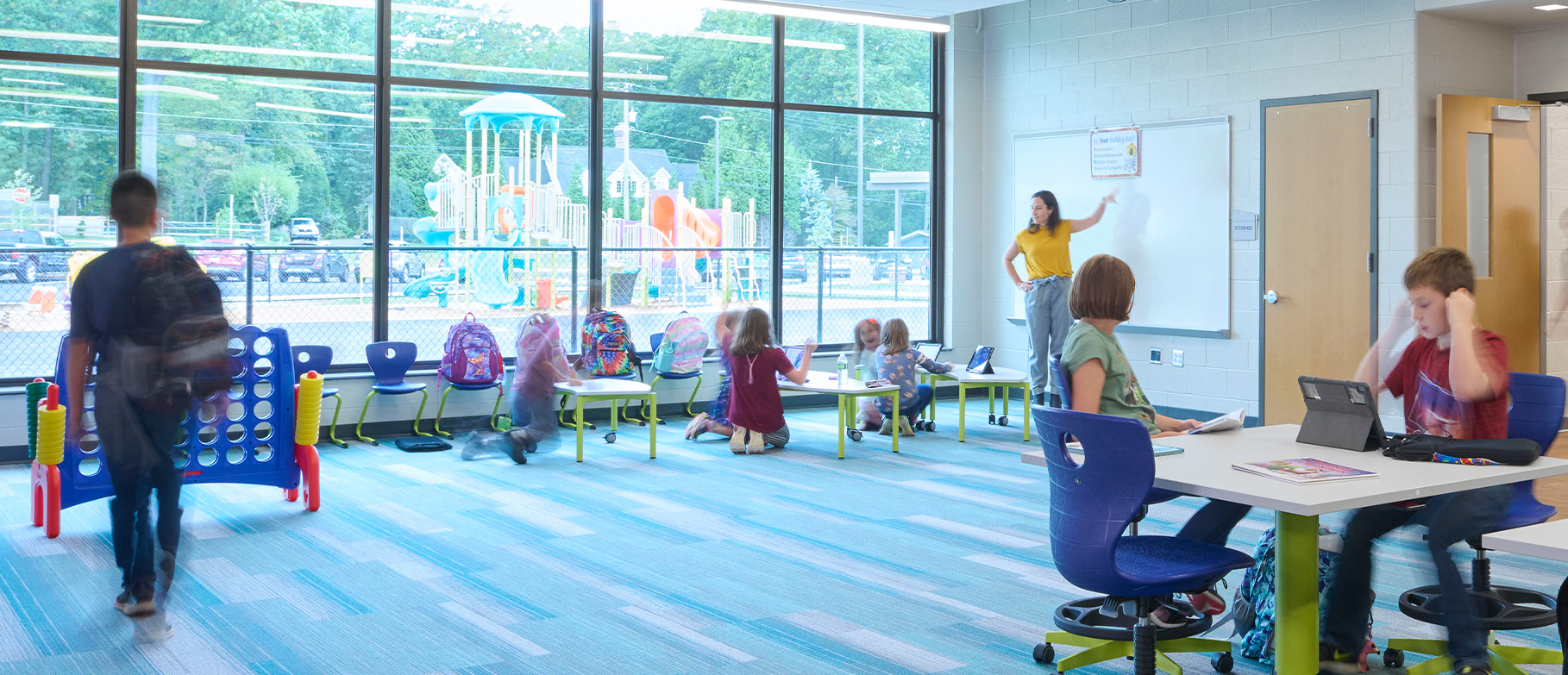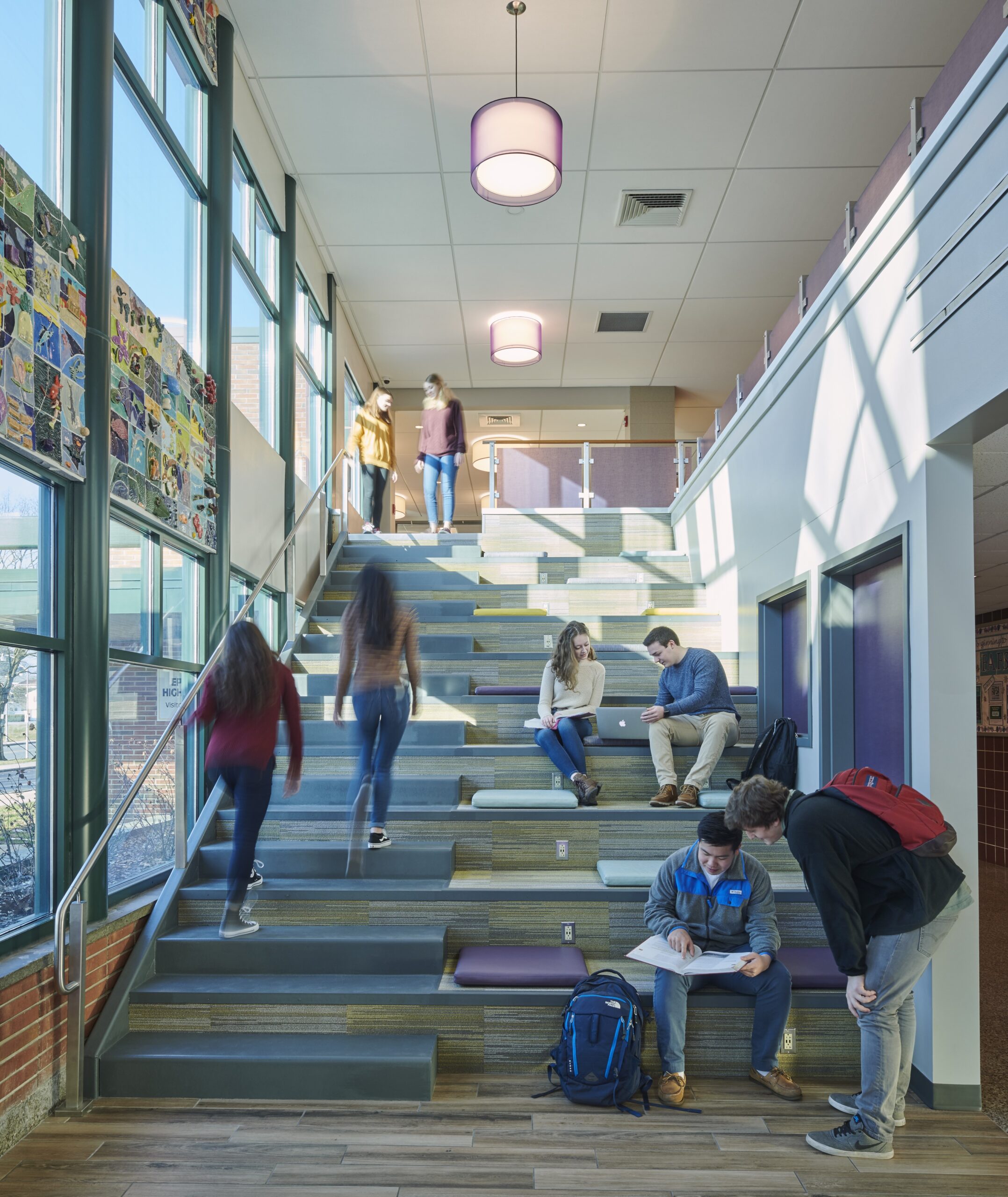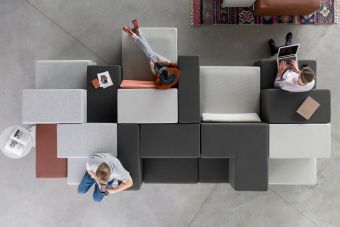Low-Floor Learning
May 16, 2023
Students need to have flexible seating options.
For anyone who has completed a K-12 education, it’s highly likely that his/her least favorite part of the school day was sitting in a desk. And just sitting there. All day. Yet, when we consider the history of formal education, not much has changed when it comes to sitting at a desk. Over 150 years ago students were sitting at desks in one room schoolhouses. If you walk into a K-12 building today, you’ll likely still see students sitting in desks; however, research shows that children don’t perform their best when they’re sitting all day. So how do we address this issue? We need to take a holistic look at the research as well as investigate and implement new low-floor learning ideas to create future ready seating options for students.
What does the research say?
Asking students to sit still at their desks is as taxing on their brains and bodies as is completing difficult schoolwork. According to Katie Headrick Taylor, Associate Professor of Learning Sciences and Human Development, University of Washington, “to ask students to sit still while performing their work actually increases their cognitive load or the burden on the mind. It requires them to concentrate on quieting their bodies, which are seeking out avenues for sense-making.”

What are the benefits of low-floor learning and non-traditional seating options?
As the research demonstrates, providing students with the ability to move around during the day has many physical, mental and emotional benefits. Dr. Mark Benden, Director of the Ergonomics Center at Texas A&M, shares that students in his active classrooms show a decrease in ADHD medication and decrease in body mass index among overweight students but showed improvement in executive function and working memory leading to improved academic achievement.
In the case study “The design of learning spaces matters: perceived impact of the deskless school on learning and teaching” authors Hanna Reinius, Tiina Korhonen and Kai Hakkarainen examine the educational and social impacts of a school near Helsinki that was designed without traditional desks. Their research concluded an increase in collaboration due to “the physical arrangements and furniture in each room [which] encourage collaborative interaction.” They also noted a decrease in bullying which they attribute to the close social relationships developed in the collaborative spaces.

What are some examples of low-floor learning seating?
One of the simplest low-floor learning options is using the floor of the classroom as a place where students can lay and feel grounded. This can be as accomplished by adding a carpet or carpet squares to your classroom. If you need a cost-effective way to add carpet squares to your classroom, reach out to your local flooring store to see if they have any samples they’re willing to donate. If allergens caught in carpeting are a concern in your classroom, try a product like Kinetex or Flotext flooring. Made from 100% recycled fibers, Kinetex is a sustainable option. It also has acoustic properties to help dampen noises. Flotext is a carpet-like product made of nylon fibers that can be mopped.
Another option for low-floor learning is the Drum from VS Furniture. Its cylindrical shape with integrated storage space promotes collaboration between students. The sitting mats consist of a thick, foam-padded body with anti-slip bottom, side carrying loop and a black, all-round surrounding strap. These same sitting mats can be used with the EcoTable-R, an extra-low height table.

If you’re interested in incorporating various seating heights in your classroom, Rise modular seating meets that need. The soft pieces act like building blocks to create an array of solo and collaborative arrangements. The Rise system can transform a classroom into an active classroom by providing students with an inside opportunity for climbing, crawling and low-floor learning seating.
For students seeking a sense of comfort, safety or refuge, the high back of Sway Lounge Seating provides a more private environment as well as some acoustic seclusion. These gently contoured chairs have an intuitive orbital motion that lets you move front-to-back, side-to-side and everywhere in between. Another chair that provides a space of refuge for students is the IKEA PS LÖMSK chair. Its unique hood converts the chair into a cozy hideaway. The Leaf Tent from VS Furniture creates withdrawal areas in the classroom for individual children or small groups.

Embrace low-floor learning
Incorporating low-floor learning seating into a classroom gives students a tactile way to embrace the environment. Remember, seating doesn’t have to be expensive. There are a wide variety of types of seating that target different price points. Find what works the best for you, your classroom and your students.
Amy Kleinfelter, IIDA, LEED AP ID+C, has 33 years of interior design experience and strives to improve people’s environments and offer a positive contribution to people’s health through her work. Her passion for biophilic design and sustainable design leads her to choose materials that benefit people without harming the environment.
Erin Harclerode, is a Pennsylvania certified teacher with six years of high school classroom experience who currently works to inform other industries and professions about the world of education.